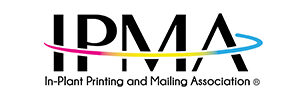Content courtesy of Bob Neubauer and In-plant Impressions.
Over the years, the judges have provided a number of helpful tips on what makes a winning entry. One thing the judges love to scrutinize is the folds on entries to make sure both halves of the sheet line up perfectly. They often eliminate entries that are cracked along the folds because they were either folded against the grain or folded without first being scored. This is the most common reason pieces are eliminated. Also, many entries were eliminated in the past because poor quality copies were submitted, when better copies almost certainly existed.
Here are some other reasons that entries were thrown out:
- Holes and missing dots in solids, possibly due to a piece of dust landing on the plate during platemaking.
- Spots and specks, especially in company logos.
- Poor ink coverage.
- Color variation from page to page, particularly noticeable in company logos or headers that appear on consecutive pages.
- Color variation between stationery, envelopes and business cards.
- On multi-page forms, the lines on each page must line up with those on other pages.
- Out of register printing.
- Front-to-back registration off.
- Doubling: when ink from the first blanket transfers onto the second blanket and gets printed on the paper again as a ghost image.
- Mottling: spotty, uneven printing in solid areas.
- Too much powder used, which leaves a gritty, unpleasant feel on the paper.
- Bad folds.
- Track marks on paper.
- Inserts that don’t fit together right.
- Items placed in the wrong categories.
- Design problems like: bad letter spacing; crooked lines of text; fuzzy photos.
- Pages printed upside-down.
- On the entries in our non-offset categories, here are some of the problems judges encountered:
- Images were not centered.
- Roller marks on page.
- Color consistency changed from page to page.
- The darkness of the toner in the text portions of the piece changed from page to page.
- Unfolded press sheets were submitted, not a finished product.
- Pieces that include a number of different parts (e.g. a direct mail package filled with loose pages, or stationery submitted with a business card and envelope) have not fared well in the past. You increase the chance that the judges will find an error. It’s best to enter the single piece of which you are most proud. (For example: One in-plant entered a direct mail package filled with loose pages, some of which had enough blemishes to disqualify the whole entry. But if the pocket folder had been submitted by itself, the judges agreed, it would certainly have won in the folder category. So pick your categories wisely. And simplify.)
- Often, many in-plants enter the contest right at the deadline. As a result, they don’t properly inspect their entries and submit the best copies. This has cost several in-plants prizes, since if they had only sent a copy with better folds and crossovers, they would have won. Instead they were eliminated. Many items have been tossed out for infractions as small as a missing dot in the middle of a solid, or cracking on a fold that hadn’t been scored.
- Examine all four copies of your entries in detail–don’t just grab any four from the top of the shelf. Look at the folds and registration. Are they perfect? Are there any visible hickeys? Look carefully, because if you don’t take the time to scrutinize your entries, be assured, our judges will.
- Get your press operators involved. Show them the entry form when it first appears each November. Get them interested in saving flawless samples–and put them aside far in advance of the deadline.
- When filling out the entry form, please check off the correct category. A brochure is not a folder. Don’t put offset pieces in the digital category, or mistakenly enter a category for small shops if yours is a large shop. When judging day comes and the judges see your piece in the wrong category, it may be disqualified — especially if they have already judged the correct category.
